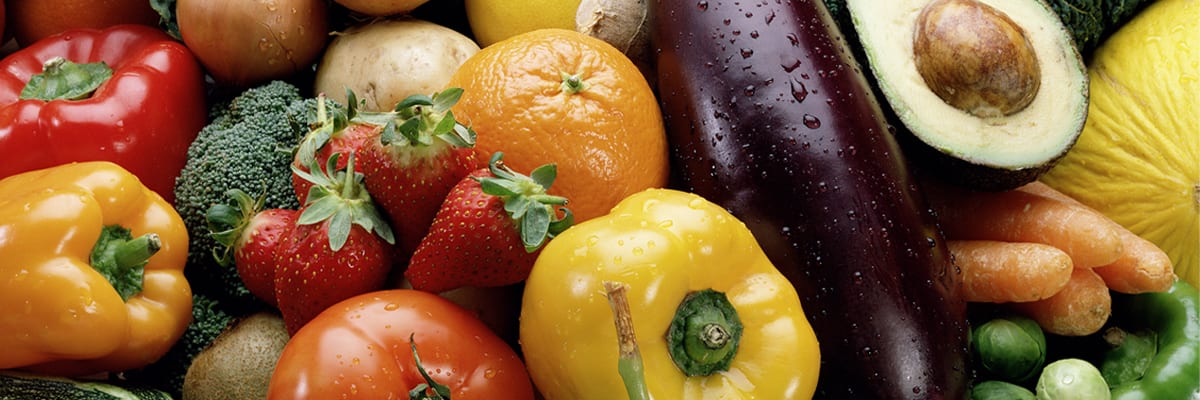Keeping the Cold Chain Unbroken with Four Simple Steps
Ensuring the Successful Transport of a Perishable Load

When shipping perishable food, maintaining proper temperature throughout the supply chain is essential to product quality, compliance, and profitability.
Food accessibility is arguably one of humanity’s greatest accomplishments in the past hundred years. Where once foods were seasonal and local, now almost anyone can enjoy any perishable food regardless of their location or time of year. Of course, maintaining these perishable supply chains and ensuring everything is cold and fresh isn’t easy. That’s why we’ve put together a few tips to help you maintain the cold chain and food safety standards throughout every step of your perishables supply chain.
Cold Chain Food Safety Explained
Cold chain is an industry term used to describe the distribution and storage of temperature sensitive (perishable) products through the supply chain. The process of delivering a product from the farm to fork is long and complex, involving many steps, which can be thought of as a chain. Each link in this chain is critical to transporting products successfully. A break in the cold chain can shorten shelf life, lessen quality and contribute to foodborne illnesses.
For every refrigerated commodity that is transported by road, rail, air and sea, there is an ideal temperature that will yield the longest shelf life and highest quality. Due to the fact that products with different ideal temperatures are routinely shipped or stored together, it is common that temperature-sensitive products experience variations from their ideal temperatures throughout the cold chain.
One Bad Apple Can Spoil the Cold Chain
Each product from produce to meat is unique and can be affected by other products, environmental factors, and even itself. Certain products are prone to odor absorption from other products or transportation (think of the chocolate variety packs that taste like red licorice).
The other matter is that one bad apple can literally spoil the bunch. Some produce is sensitive to ethylene, a plant hormone involved in ripening. Other products, especially fruit, produce ethylene. In other words, one bad apple will produce ethylene, which causes the apples around them to go bad, and so on. This can spell disaster for your cold chain and overall food safety.
When shipping any food, it is imperative to understand which products produce significant amounts of ethylene and invest in ethylene absorption sachets to prevent spoilage.
When considering produce, it is important to keep in mind that the product is still alive. Living produce will respirate, and, in some circumstances, produce their own heat that can lead to a host of quality defects if you don’t identify the change with real-time temperature monitoring.
To an extent, the vast majority of all reactions occurring within a food product are slowed by reducing temperature. This includes decay, respiration, ripening, oxidation, color change, and many other chemical reactions. Temperatures below ideal can be just as harmful as temperatures above the ideal. For these reasons, careful temperature management is critical to maintaining food safety in the cold chain.
Chilled Foods versus Frozen Foods
When it comes to food transportation, there are often two main methods for shipping products. These include chilling and freezing the food.
Chilled foods
Chilled foods focus on prolonging the shelf of a product by delaying chemical reactions that cause food to spoil. Generally chilled food is stored between 0°C and 5°C.
Chilled foods offer convenience and preserve food longer than fresh food shipments. However, although chilled foods last longer than fresh products, food manufacturers will also need to be extra careful to avoid contamination prior to loading the trucks. Chilled food will also need to be more heavily monitored than frozen food.
Frozen foods
Freezing food helps preserve food quality. Although frozen food may further reduce the risk of spoilage, contaminants can still enter the foods, making it important that teams remain vigilant. Transporting frozen food can be broken into the following stages: Pre-freezing: In this stage, it’s important to monitor the initial quality of the product. Teams should also consider how they can further prolong shelf life (for example: cutting meat and vegetables can reduce shelf life).
Freezing
Teams should generally freeze the food quickly once prepared.
Challenges with Cold Chain Food Safety
There are several challenges when it comes to keeping food safe. These include the following:
Lack of real-time visibility
Without insight into the cold chain, it can be difficult to determine the route cause of problems, when they do occur.
Loading and unloading
It’s important to minimize the time food spends in less than ideal temperatures. Companies, without an efficient process of loading and unloading products from food trucks, risk food spoilage.
Inconsistent temperatures
No food truck and no warehouse has a consistent temperature throughout. In order to preserve quality, it’s important to identify these risk areas and monitor them.
No insight or data analytics
Without access to the right data, food distributors will find it difficult to optimize their processes. However, even when they do have access to the data, it can be time-consuming and daunting to sift through the gathered information to obtain insights.
Four Steps to Maintain Cold Chain Food Safety Standards
There are four simple steps to ensuring that a load of perishables is transported successfully:
1. Maintain temperature
The product must be loaded at the proper temperature. This is because transport refrigeration units are designed to maintain product temperature and not further cool. This also means the product must have cold chain support at each stop between shipping vehicles. It cannot be left on a dock or a curb until it’s ready to go on the truck, it must go directly from the temperature-controlled environment to the cargo bay.
2. Prepare the container
Prior to loading, it is important that the trailer or container be prepared properly. It should be pre-cooled with the correct set-point and refrigeration mode selected. You may even invest in a modified atmosphere system to achieve the ideal conditions for your product. An inspection should be conducted to ensure the trailer or container is clean and free of damage. Damage to the walls, door seals, and insulation breakdown in older trailers and containers can allow heat to penetrate.
3. Proper distribution
The trailer or container should be loaded properly. Pallets should be loaded in an off-wall fashion so that no product is contacting the walls. When pallets are loaded against the walls, product can warm due to the conduction of heat through the walls. An improperly loaded trailer, or a container with product stacked too high or against the walls, will not allow for proper airflow. Debris can also block normal airflow under the product, causing irregular airflow.
4. Temperature visibility
If all of the above steps are carried out properly, the fourth step – maintaining the temperature during transport – should be accomplished. Due to the highly variable nature of distribution temperatures, Sensitech recommends that every shipment contain a TempTale® monitor to ensure that the temperature has been maintained during transit.
No matter what your product quality challenge is, Sensitech has solutions that help you optimize your cold chain to maintain food safety and enhance the quality and appeal of your products. Want to learn more about cold-chain logistics? Contact Us today.

